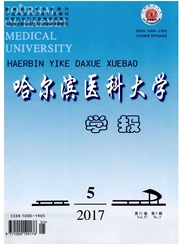

 中文摘要:
中文摘要:
目的探讨DSA引导和超声辅助穿刺在PICC困难置管中的临床应用价值。方法选择血管条件差的163例患者,按其入院的先后分对照组82例和实验组81例。对照组采用超声辅助穿刺和引导的操作方法,实验组采用超声辅助穿刺和DSA引导的方法。比较了两组PICC导管头端最佳位置以及置管后异位、静脉血栓的发生等并发症指标。结果实验组81例患者,导管头端均在最佳位置,成功率为100%,而对照组82例患者中只有62例在最佳位置,成功率为75.6%。实验组置管后异位的发生以及静脉血栓的发生也低于对照组,差异有统计学意义(P〈0.05),两组患者一次穿刺成功以及机械性静脉炎的发生均无统计学意义(P〉0.05)。结论对于置管困难的患者在DSA直视下可以准确判断导管头端位置,定位精准,减少了静脉血栓以及置管后异位的发生。
 英文摘要:
英文摘要:
Objective To explore the value of the clinical applications of the peripherally inserted central catheters (PICC) in difficult cannula using the puncture with digital subtraction angiography (DSA) guidance and ultrasound assistant. Methods According to the order of the hospitalization, a randomized clinical trial comprised of 163 patients with poorer vas and requiting PICC were randomly divided into control group (82 patients) and experimental group (81 patients). The method of ultrasound assistant puncture and guidance was adopted for the control group, and the method of ultrasound assistant puncture and DSA guidance was chosen for the experiment group. For the two groups, the optimal position of head end for the PICC and the occurrence of the shifts of the catheter, venous thrombus and the other complications were compared. Results All the head ends of catheters were placed at the optimal positions for the 81 patients of the experiment group and the corresponding success rate was 100%, while for the 82 patients of the control group, only 62 patients were placed at the optimal locations and the corresponding success rate was 75.6%. Both of the occurrence of shift after eannula and the venous thrombus for the experimental group were less than those for the control group, and the differences for the two comparisons had statistical significance (P 〈 0.05 ), while both the occurrences of the successful puncture for once puncture and the mechanical phlebitis had no statistical significance (P 〉 0.05 ). Conclusion The location of head end of the catheter can be accurately ascertained under the DSA and precisely fixed the position for the patients with difficult cannula, which reduces the occurrences of the venous thrombus and the shift after cannula.
 同期刊论文项目
同期刊论文项目
 同项目期刊论文
同项目期刊论文
 期刊信息
期刊信息
